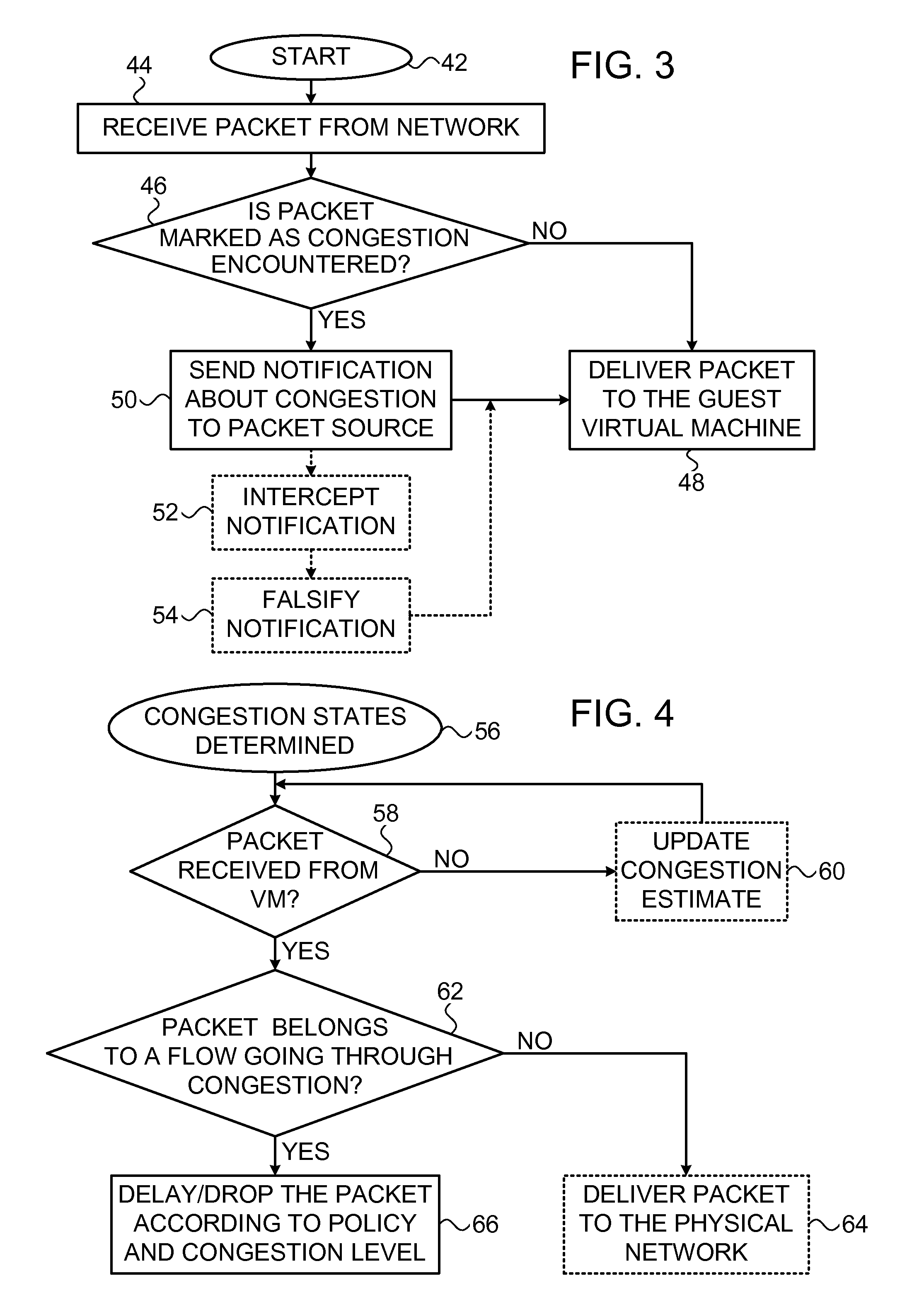Congestion control enforcement in a virtualized environment
- Summary
- Abstract
- Description
- Claims
- Application Information
AI Technical Summary
Benefits of technology
Problems solved by technology
Method used
Image
Examples
first embodiment
[0068]Reference is now made to FIG. 2, which is a detailed block diagram of a virtualized network environment subject to congestion control, in accordance with an embodiment of the invention. A host processor 20 comprises a hypervisor 22 and is configured to access suitable memory 24.
[0069]The host processor 20 includes network interface hardware 26, a network interface card 30 (NIC) configured to transmit and receive data packets over a physical data network 32. The network interface hardware 26 may comprise a virtual switch 28 as shown in FIG. 2. Alternatively, the virtual switch 28 may be an element of the hypervisor 22 and in some embodiments may be realized as multiple virtual switches. The hypervisor 22 may support any number of virtual machines (VMs), here represented by three virtual machines 34, 36, 38. The hypervisor 22 is linked to a physical switch 40 interfacing the data network 32. Upon reception from the network of packets that have been marked to indicate congestion ...
second embodiment
[0097]Referring again to FIG. 3 and FIG. 4, performance of step 50 and final step 66 indicate non-compliance with the congestion-control mechanism. These steps may include a signal to a billing system, charging users based upon the amount of congestion encountered. This approach can create a financial incentive to comply with congestion control policies.
third embodiment
[0098]Reverting to FIG. 3, step 50 may provide a graphical indication of VMs that cause congestion, and can be used as an input for VM migration decision processes. For example, if a VM produces a large amount of congestion on a current machine, e.g., a predetermined percentage of the network bandwidth, recognition of server overload may indicate migrating the VMs that cause the most congestion. This approach can help to reduce the number of congested links in the network. One congestion metric for purpose of step 50 is a ranking in each hypervisor according to congestion control limitations of its respective flows. A VM having more than a given percentage of its flows subject to congestion control restrictions becomes a candidate for migration.
PUM
 Login to View More
Login to View More Abstract
Description
Claims
Application Information
 Login to View More
Login to View More - R&D
- Intellectual Property
- Life Sciences
- Materials
- Tech Scout
- Unparalleled Data Quality
- Higher Quality Content
- 60% Fewer Hallucinations
Browse by: Latest US Patents, China's latest patents, Technical Efficacy Thesaurus, Application Domain, Technology Topic, Popular Technical Reports.
© 2025 PatSnap. All rights reserved.Legal|Privacy policy|Modern Slavery Act Transparency Statement|Sitemap|About US| Contact US: help@patsnap.com



